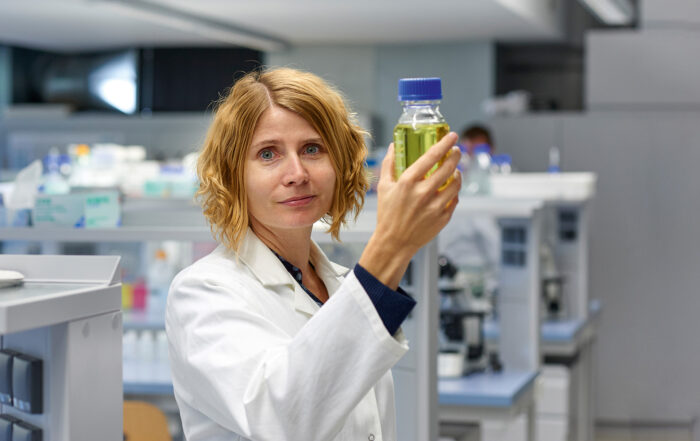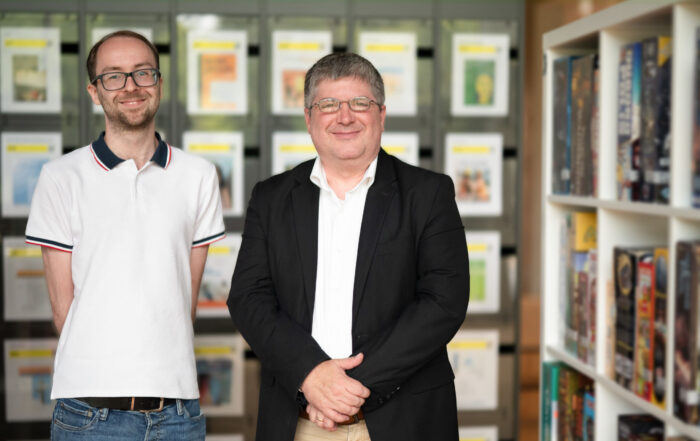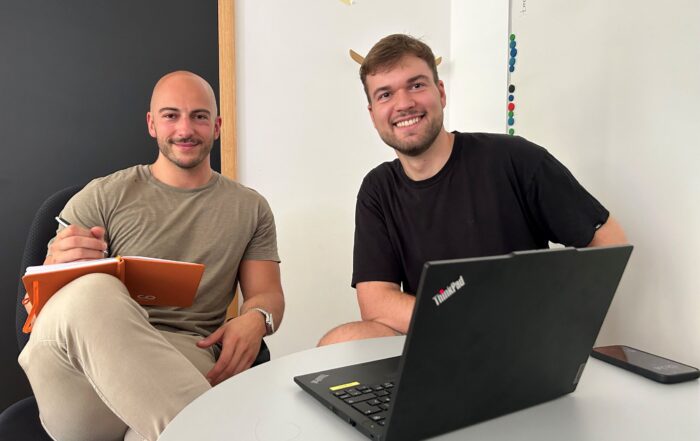17. April '24
On 15.04.2024, representatives from companies and authorities met with scientists at Coburg University of Applied Sciences for an exciting transfer meeting. A “clean” house façade without greenish discoloration – this is ensured by the use of biocides in the plaster.
Rain events cause some of the biocides to be released from the façades and enter the groundwater via the soil.
Research projects that deal with the resulting environmental pollution are therefore very relevant.
Funding from the Bavarian State Ministry of Science and the Arts has made a research project possible over the past three years: “OMiBiB*: Optimizing and minimizing the use of biocides in building materials”.
Strategies were developed here to optimize the testing and development of building products.
These competencies include the analysis and evaluation of biocides and transformation products, the development of biological test systems, the development of microfluidic and sensory test systems as well as concepts for modelling and visualization.
At the end of the project, a whole day was reserved for presentations ranging from risk assessment to modelling, analytics, microbial colonization of facades and visualization.
Guests from the Federal Environment Agency and the Federal Institute for Materials Research and Testing (BAM) underlined the relevance of tackling this environmental problem.
Dimitrios Skodras from Fraunhofer IME, for example, presented the modeling of soil contamination from biocides in façades in his lecture.
There are now several models that make it possible to mathematically derive predictions on leaching behavior.
Apart from minimizing the use of biocides in façades, a completely different approach also comes into play: Dr. von Werder from BAM showed that the targeted promotion of algae growth can be an architectural design option that does not require the use of biocides in the long term.
In the discussion rounds, there was an interesting exchange between the participants from industry, science and associations regarding optimization and solution approaches.
The common conclusion: the aim must be to reduce or even completely avoid the use of biocides.
The project at Coburg University of Applied Sciences has created an important data basis.
Regulation is now the responsibility of other bodies.
The day was rounded off with information on funding opportunities for small, medium-sized and large Bavarian companies from Dr. Viktor Becher from Bayern Innovativ. Prof. Dr. Stefan Kalkhof and Prof. Dr. Matthias Noll, project manager of the OMiBiB project, see great potential for cooperation with Coburg University of Applied Sciences.
Presumably, fewer biocides will then play a role.
“What we now know about biocides, we also need to find out about microplastics” – that was a valuable conclusion from industry representatives.





